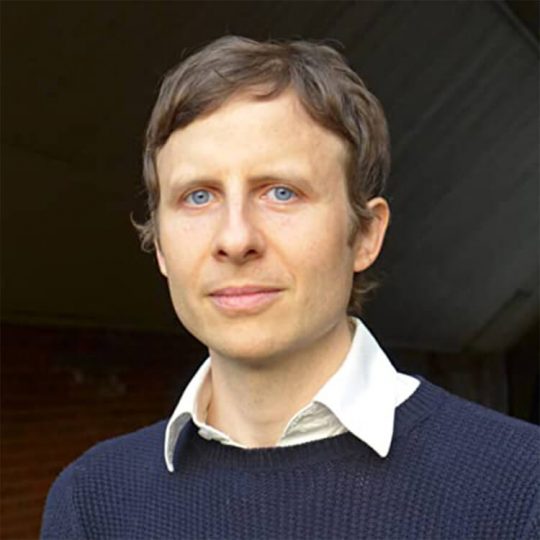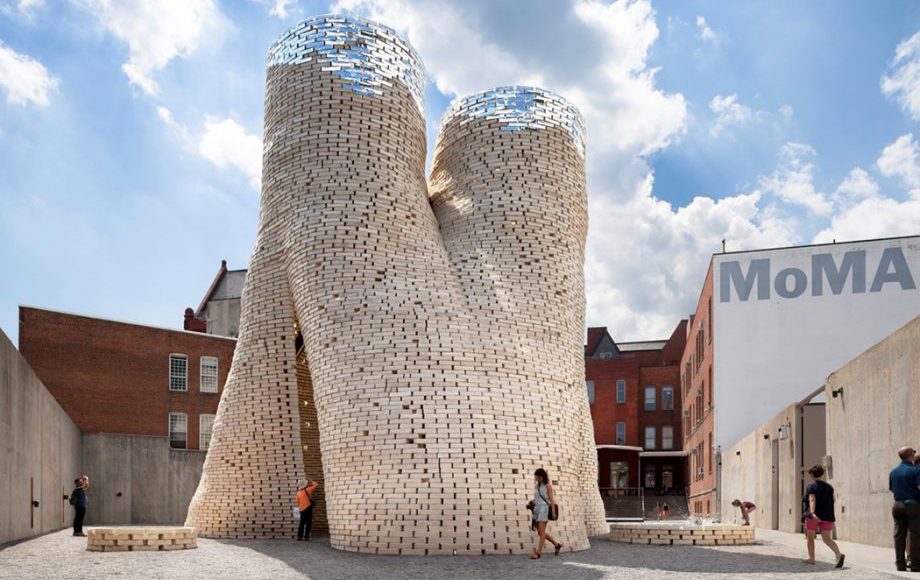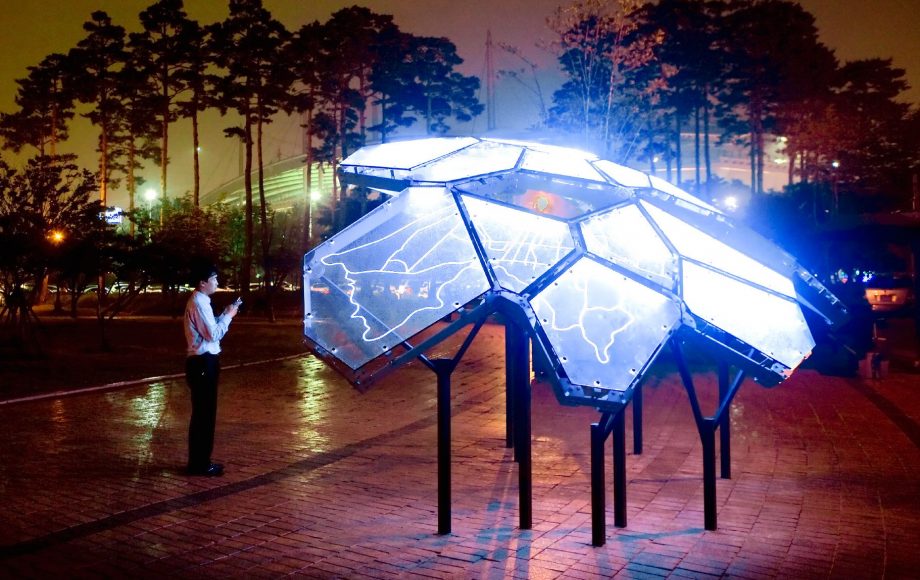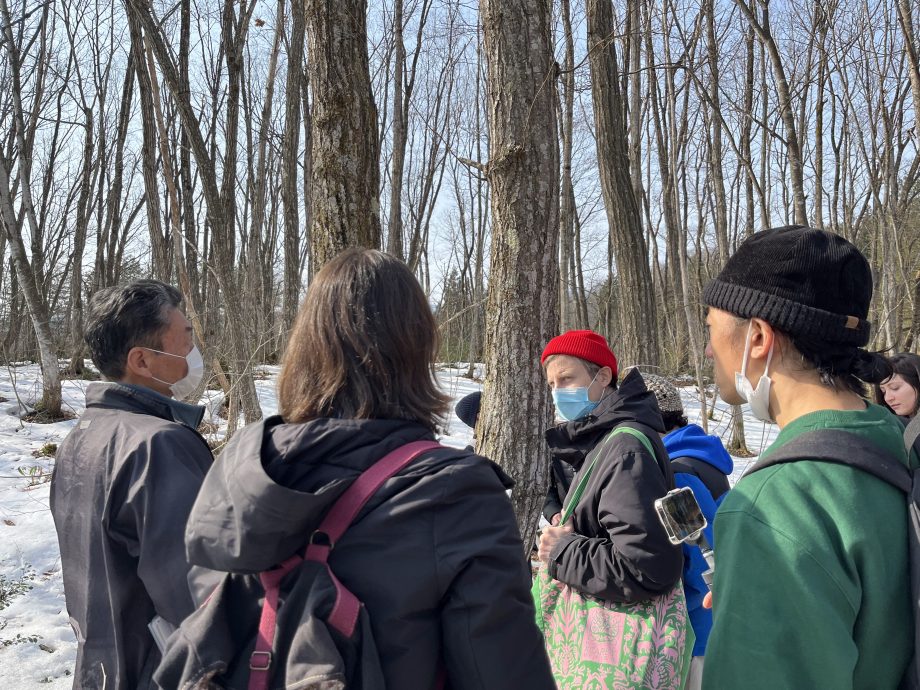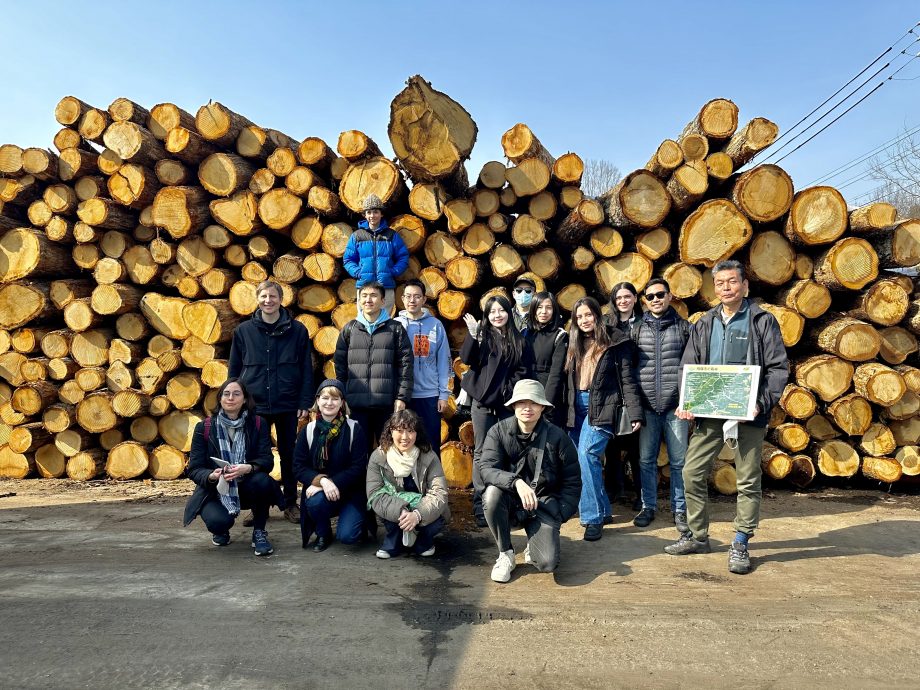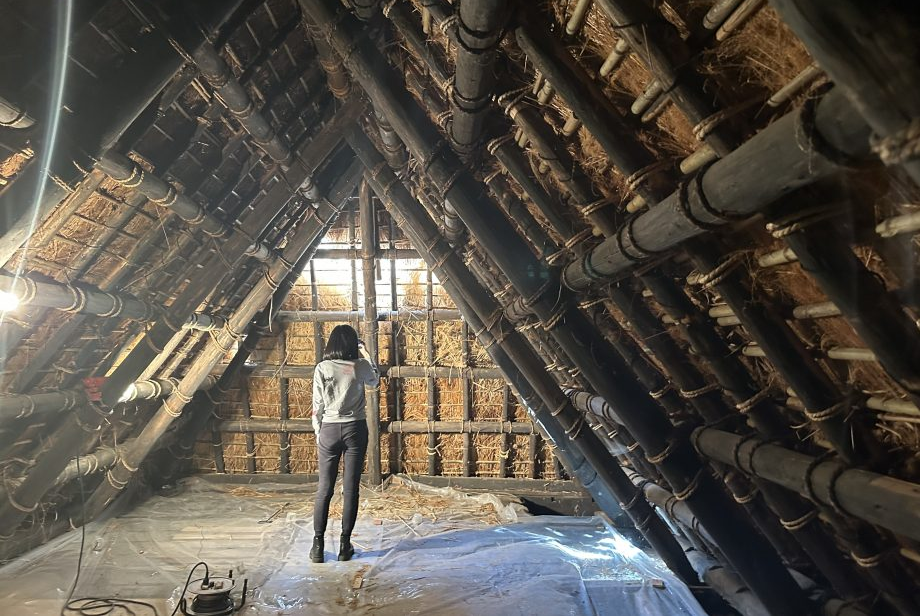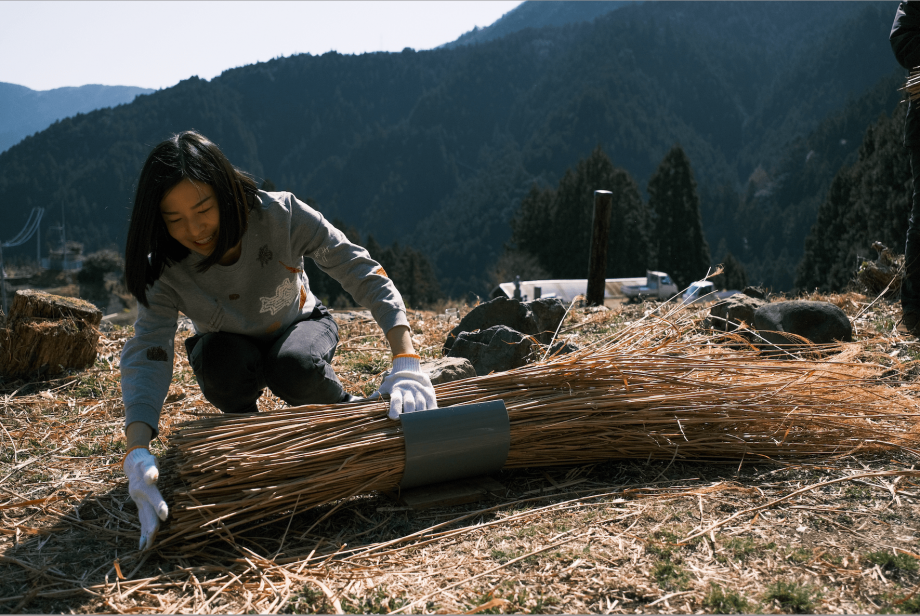Project Case
July 10, 2023
FabCafe Global Editorial Team
Gasoline-powered transportation is often identified as the cause of rising carbon emissions that lead to climate disasters such as earthquakes and wildfires. In reality, buildings account for a whopping 40% of global energy-related carbon emissions, nearly twice as much as transportation causes. According to a United nations estimate,
“By 2060, the world is projected to add 230 billion square meters (2.5 trillion square feet) of buildings, or an area equal to the entire current global building stock. This is the equivalent of adding an entire New York City to the planet every 34 days for the next 40 years.”*
Currently, buildings are seen as static, permanent structures. However, what if we could imagine buildings as open, dynamic systems? How might this way of approaching architecture enable us to develop radically better solutions for the climate crisis?
These are key research questions for David Benjamin, Principal of The Living, a New York-based design practice at the forefront of innovative architecture, and associate professor at Columbia’s Graduate School of Architecture, Planning, and Preservation (GSAPP).
*UN Environment, Global Status Report 2017
-

-
David Benjamin (‘05 M.Arch) is Founding Principal of The Living and Associate Professor at Columbia GSAPP. The Living has won many design prizes, including the Emerging Voices Award from the Architectural League, the New Practices Award from the American Institute of Architects New York Chapter, the Young Architects Program Award from the Museum of Modern Art and MoMA PS1, and a Holcim Sustainability Award.
David Benjamin served as a Judge in the global award for designing the circular economy, crQlr 2021 (“circular”), organized by Loftwork and FabCafe.
-

One of The Living’s most notable projects include the “Hy-Fi” mycelium mushroom tower, a 100% compostable tower in New York’s MoMA PS1 courtyard. (Photo: The Living)
-

“Living Light”, a permanent pavilion commissioned by the City of Seoul that glows and blinks according to real-time air quality and public interest in the environment. (Photo: The Living)
“Circularity is about a way of life as much as it is about technology or materials.”
Instead of depending on stand-alone technological solutions, David believes that new ways of living, and the holistic systems surrounding them, can create the far-reaching transformations necessary for addressing the climate change emergency. In his own words, “Circularity is about a way of life as much as it is about technology or materials”. For this reason, architects of the future must possess not only technical skills but also the ability to design and engage with communities, involve local stakeholders, maximize resource efficiency, and promote resilience.
Challenge: Rethink circular design through the lens of traditional lifestyle and sustainable forestry ecosystems
To cultivate the next generation of architects to develop a mindset equipped with an understanding of such new ways of living and circular ecosystem practices, David Benjamin teamed up with FabCafe to organize a field research tour across the less traveled path: the countryside of Japan. The tour aimed to provide hands-on experiences and close encounters with local community members to understand their unique insights and methodologies in order to inspire and incorporate them into their existing sustainable architecture framework.

Meet the participants: David Benjamin, his family, and 10 The Graduate School of Architecture, Planning and Preservation (GSAPP) Students (Location: The Kayabuki School in Kamikatsu, Japan).
Phase 1: Discover (Day 1-2) in Kamikatsu, Japan
FabCafe collaborated with INOW, an educational program located in Kamikatsu, Tokushima, which is renowned globally as Japan’s “Zero Waste Town”. The group took part in site visits, hands-on experiences, and ethnographic research through personal exchanges with local leaders. GSAPP students reflected on a lifestyle that centers on the concepts of coexistence with nature, conscious consumerism, and highly integrated neighborhood support networks.

Day 1 in Kamikatsu: David Benjamin and GSAPP Students tour the Kamikatsu Zero Waste Center, a waste management and materials recovery center that recycles more than 80 percent of the waste produced in Kamikatsu by separating local garbage into 45 different categories.
Phase 2: Develop (Day 3-4) in Hida, Japan
In the second phase, the group traveled to Hida in Gifu Prefecture. The tour in Hida was organized by Hidakuma, a company which aims to create regenerative business value through harvesting local hardwood forests while leveraging design, digital technology, and traditional craft. In Hida, where over 93% of the land is covered in lush forests, Hidakuma members share a vision to improve the relationship between people and nature through inspired design for space, furniture and more.

The Morinoha Office that serves as Hidakuma’s base is located intentionally close to several core stakeholders in the forestry ecosystem, including the sawmill, the lumber drying area, the center for the Study of Bent Trees, and the Hida forest itself. (Photo by: Tsubame Architects)
Consideration of the long-term perspective is paramount when designing circular systems, as the decisions made today will have far-reaching implications for the future. This point was underscored during conversations with residents of Kamikatsu and Hida, and was further illustrated by the forest tour conducted by Hida City Regional Forestry Policy Advisor and President of the Comfortable Forest Creation Institute, Kazushi Nakatani.
According to Nakatani, an intentional forestry practice implies planning and execution of tree planting, growth and lumber harvesting can happen on 10, 30, and even 100-year scales. These days, the climate is warming too quickly for some trees to catch up and trees that cannot adapt to their climate can be more likely to succumb to pests and disease.1
1 Besl, J. (2021), Planning and planting future forests with climate change in mind, Eos, 102, https://doi.org/10.1029/2021EO159331. Published on 07 June 2021.

Circularity is a holistic approach that transcends the boundaries of technology or materials and permeates every aspect of life, from food to art, and the way we think and live. It is not just about designing buildings and using resources efficiently but about creating a culture that values sustainable living and promotes a healthy and harmonious relationship with nature.

Participants dive into traditional architecture while actively contributing to the restoration of Japan’s cultural heritage. At the Kayabuki School (Kamikatsu), participants prepared locally harvested straw to restore the town’s last remaining traditional thatch roof house. Contributing to the maintenance of this roof allowed participants to actively contribute to the local community. This kind of activity was once a way of life for local Kamikatsu residents.
To achieve a successful transition to a circular economy, it is essential to adopt a bottom-up approach that values diverse perspectives and voices, including those of residents and experts on the ground. However, professionals and local communities often have different vocabularies when it comes to discussing climate change, sustainability, and carbon emissions, which can create a gap between them.
The Circular Design Tour provided an opportunity for participants to explore the “lost wisdom of the past” and the vital role that vernacular knowledge still plays in rural Japanese communities and architectural practices. By connecting with residents and craftsmen, the tour facilitated a dialogue between architecture professionals and local stakeholders, helping to bridge the gap that can exist between them.

Engagement with local practitioners on the ground cannot be understated. During the Circular Design Tour, participants met Nakamura san, a local resident in Kamikatsu. His way of life is strongly centered around personal well-being, conscious consumerism, and connection with the neighborhood.

In Hida, the tour included visiting a local craftsmen’s studio, where participants learned about hardwood processing and drying as well as design practices informed by both traditional and modern expertise.
In Hida, the group learned about restorative as well as profitable chains of value that empower citizens, makers, and nature alike. Hida City faces a pain point of how to sustainably utilize the wood from its abundant hardwood forests. To tackle this challenge, the Hida City council, Hidakuma, the Forest Cooperative, and local craftsmen are working together to create a Magarigi Center, “hardwood tree database” to better understand the data of the forest to ensure long-term health and promote sustainable growth for future generations.
One highlight of the visit was learning about the Morinoha Office by Hidakuma, a recently inaugurated space built using local hardwood in a modular way such that the beams can be easily repurposed after deconstruction. Such practices embody the responsible consumption and production vision of Hidakuma and other local stakeholders.

Project Outline
Project length: January 2023 – March 2023
- Participants: David Benjamin, 10 Columbia GSAPP Students
- Project Manager: Kelsie Stewart
- Creative Directors: Judit Moreno, Rio Kudo, Ming Wu
- Photographer: Shotaro Sawa
- Producer: Kelsie Stewart
- Planning and tour operation: INOW Kamikatsu, Hidakuma Inc.
Please reach out if you are interested in…
- Connecting with circular design practitioners for professional exchange and project development.
- Exploring circular design through hands-on experiences and workshops.
- Kicking off an open collaboration project in circular design.
- Providing your students or employees with unique learning experiences alongside industry experts.
-
FabCafe Global Editorial Team
This articles is edited by FabCafe Global.
Please feel free to share your thoughts and opinions on this article with us.
→ Contact usThis articles is edited by FabCafe Global.
Please feel free to share your thoughts and opinions on this article with us.
→ Contact us

